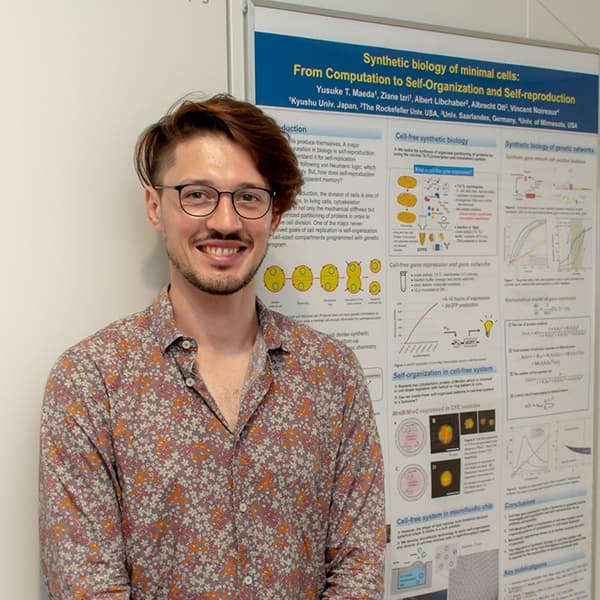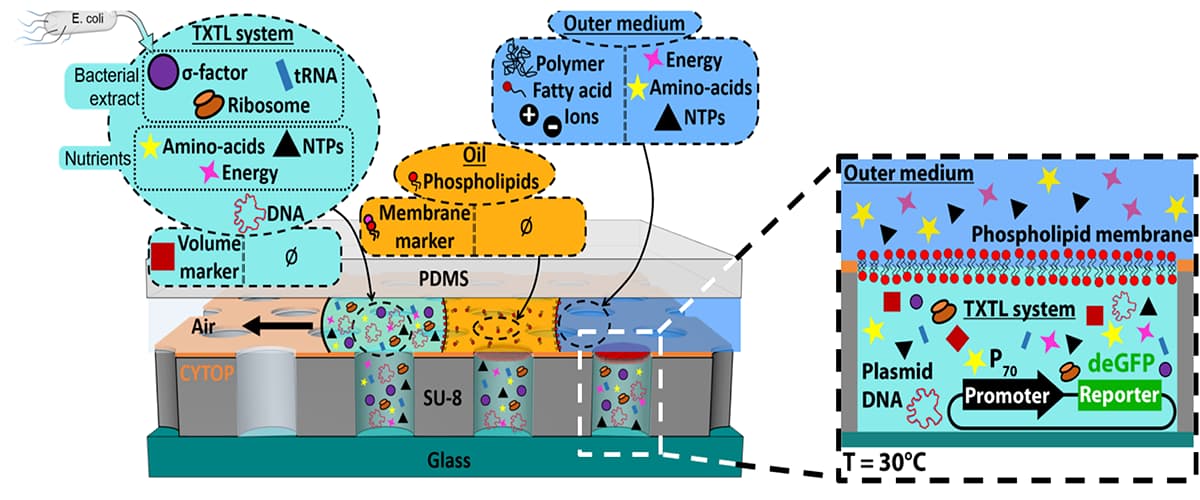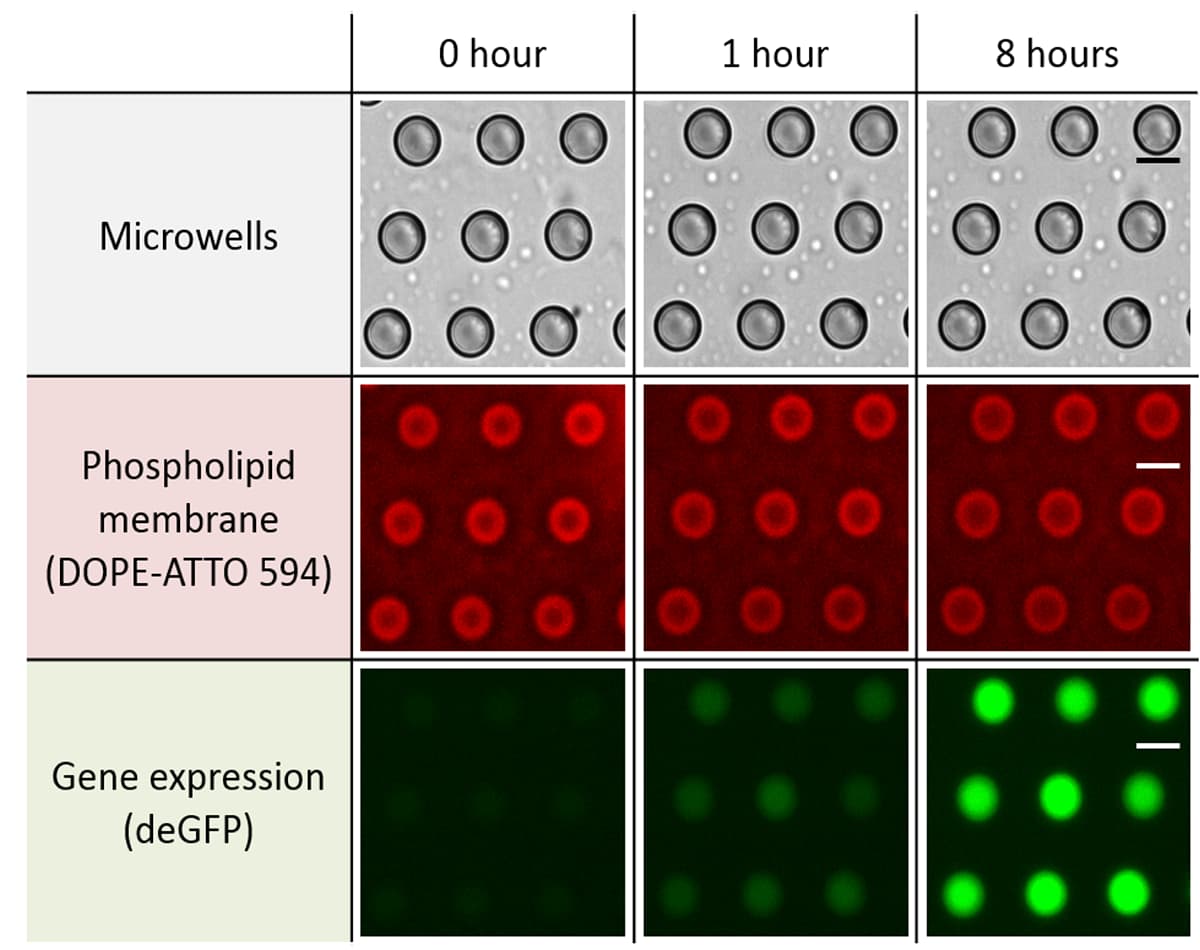
Artificial Cells on a Chip with the Highest Protein Synthesis.
Jul. 26, 2019
It is not easy to give a univocal definition of “life”. From the perspective of a physicist, a way to rephrase the question of the definition of “Life” could be “What are the necessary constitutive elements of a living system?” Nature has provided a great many realizations of living systems, and all shared a common building block: the cell. By adopting a bottom-up approach, that is to say making complex structures out of the simplest elementary building blocks, many scientists have tried to build simplified artificial systems that replicate the metabolic functions observed in cells.

The recent work conducted by Dr. Ziane Izri in the group of Yusuke Maeda, Associate Professor at the Faculty of Science of Kyushu University, in close collaboration with Pr. Vincent Noireaux from the Department of Physics of the University of Minnesota, gave rise to a novel platform for transcription-translation gene expression in membrane-bound microfluidic device for the development of artificial cells. The research group developed a new way to enclose protein synthesis reactions in cell-sized compartments of 15 pL sealed by a biological phosphilipid membrane, while allowing them to interact with a controlled outer medium. The sensitivity of protein synthesis in membrane-bound microwells to the composition of the outer medium proves that such microreactors have the ability to communicate with the outer medium. More advanced metabolic functions should be able to take place within these bioreactors and allow, for example, the functionalization of the membrane thanks to the synthesis of specific membrane proteins.
The research was published online in ASC Synthetic Biology on July 3, 2019.

